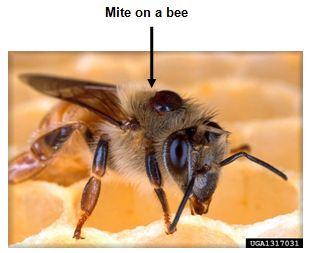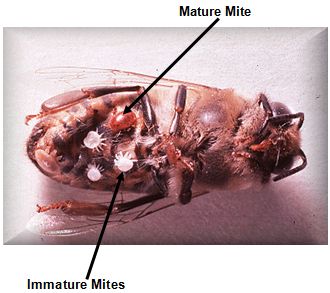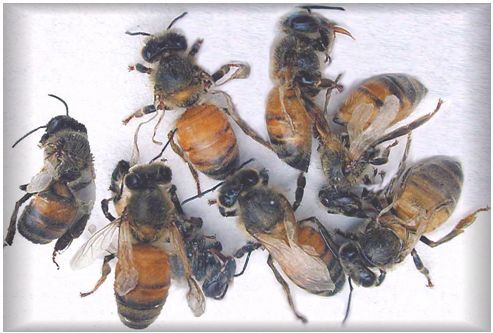Page 1
Page 2
Page 3
Page 4
Page 5
Page 6
How it Spreads
The mite is transferred from bee to bee in the hive, and then from colony to colony when a bee drifts, robs from another hive or swarms - this accounts for short distance spreading of Varroa.
Larger distance spreading is caused by infested colonies being transported around by beekeepers or commercial keepers who move their bees long distances seeking flowering crops.


What to Look Out for!
Most of the bees live to emerge from the cell despite being attacked in the cell as it matures, but some do die during its pupal-stage.
The bee has a shorter life span and is often weak and suffers weight loss. Another sign on an emerged bee is shrunken or deformed wings, reduced resistance to infections and finally patches of neglected or dead brood.

Bees with deformed wings
To continue to Page 3, please click here...